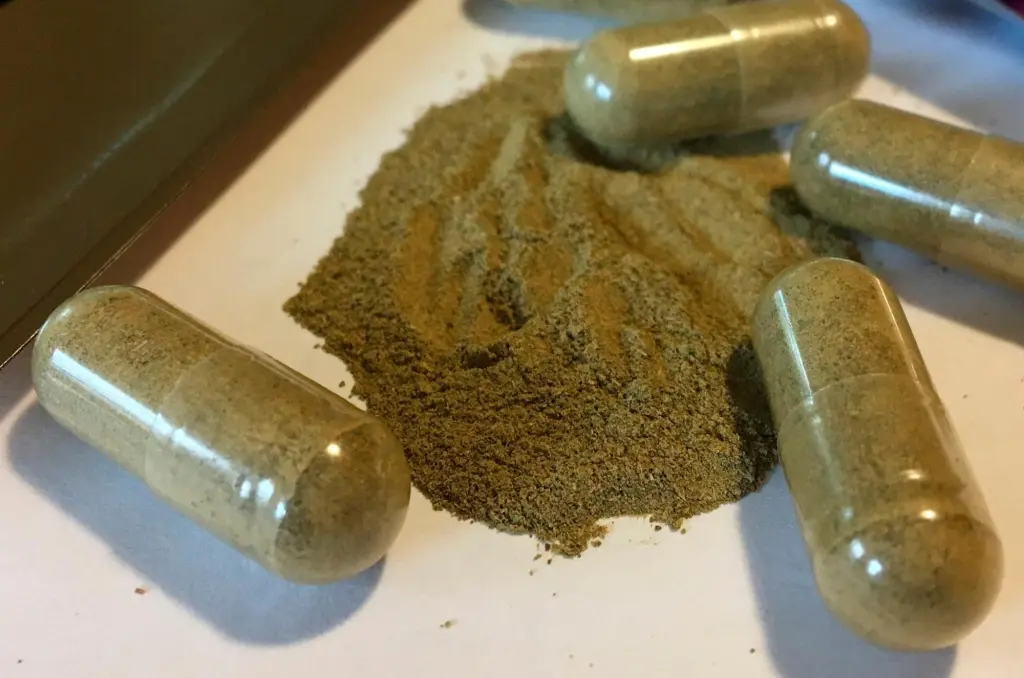Copyright Hartford Courant

I read with interest the article in the Hartford Courant about the pending regulations of kratom. Unfortunately, the journalist and those quoted in the article seem to intermingle facts about kratom-derived products, such as isolated concentrated synthetic 7-hydroxymitragynine (7-OH) opioid products and natural leaf kratom, in ways that can be misleading. As a leading kratom researcher and distinguished professor and chair of Pharmacy Practice at the University of Connecticut School of Pharmacy, there is context that readers, regulators, and legislators need to understand. There is a Mitragyna speciosa tree in Southeast Asia whose leaves are commonly known as kratom. These leaves can be dried and crumbled into a greenish-brown powder, producing natural leaf kratom. Natural leaf kratom contains dozens of active phytochemicals called alkaloids, and they mostly stimulate serotonin and alpha-1 and alpha-2 adrenergic receptors. One alkaloid, mitragynine, mildly stimulates the mu-opioid receptor, but other alkaloids block opioid receptors. The FDA recently completed a normal volunteer study using up to 12 grams a day, 4 times the typical dose, and therapy was well tolerated. Natural leaf kratom has been available in Southeast Asia for centuries and in the US since the 1970s. A decade ago, laboratories began extracting only mitragynine from the leaves, producing concentrated products that were often artificially flavored and brightly colored. Recently, laboratories started taking the mitragynine extract and chemically converting it (sometimes with pool shock) to create synthetic opioids called 7-hydroxymitragynine and mitragynine pseudoindoxyl, which were at least as potent as morphine and 100 times as potent at stimulating the mu-opioid receptor as mitragynine. Unlike natural mitragynine, animal studies show these synthetics are as addictive as morphine and can cause respiratory depression. Some manufacturers spiked extracts with 7-OH, enhancing their euphoric effects and increasing their addictive potential. In 2023, the first isolated and concentrated 7-OH and mitragynine pseudoindoxyl products became available, coinciding with reports of severe addiction and rising emergency services use. In the Courant article, Jana Wu reported a 63% increase in kratom-related admissions over the past year, reflecting the rise of isolated and concentrated kratom derivatives, not natural leaf kratom. The Courant article also references a Harvard Health Publishing article suggesting all kratom is unsafe “gas station heroin.” However, the author, Peter Grinspoon, MD, did not use the term “gas station heroin” in reference to natural leaf kratom. He proposed regulation and education, not a ban on leaf kratom, noting that the current healthcare system is woefully inadequate to care for people with opioid use disorder. The FDA recently recommended scheduling 7-OH products but not natural leaf kratom, a recommendation shared by leading researchers at the University of Florida, the American Herbal Products Association, and our Kratom Consumer Advisory Council, or KCAC. KCAC has recommended a framework requiring natural kratom products to be registered before sale in Connecticut. Registration includes a certificate of analysis from an independent laboratory and product photos. This assures that no isolated and concentrated 7-OH and/or mitragynine pseudoindoxyl product is being sold, no heavy metal contamination is present, the products have warning labels and the FDA disclaimer, and that there are no juvenile flavorings, scents or other features that would attract children. A ban on sales to anyone under 21 completes the regulations, which align with those for alcohol and tobacco products. It also maintains access to traditional natural leaf kratom, which many consumers report has improved their lives, either for self-treatment of opioid use disorder or chronic pain. Many who need treatment after chronic opioid use cannot access or afford therapies, leaving illicit opioids as the only option. While not risk-free, natural leaf kratom offers an accessible option, and many users report that it helps them regain control of their lives. The clinical trial evidence to prove this is true has not been conducted, but the animal data, combined with the anecdotal experiences, suggests that it is very promising. In conclusion, kratom-derived products have been pushing the envelope with extracts and chemical alterations of alkaloids, producing stronger and more potent opioid effects. This does not mean that the natural leaf kratom products have suddenly become more dangerous. We need a balanced, thoughtful regulatory environment for natural leaf kratom to support people with opioid use disorder and chronic pain.



